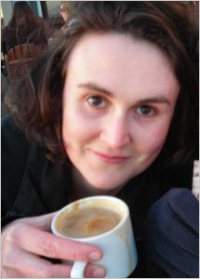Seminar 24th October 2012 4 p.m. Building 53, Room 4025
CS4: Complexity Systems Simulation Seminar Series
Alex Penn
University of Surrey
- Web page
- http://erie.surrey.ac.uk/erie-team/userprofile/apenn
- Submitter
- Luke Goater
The second seminar of the CS4: Complexity Systems Simulation Seminar Series 2012/13 will take place next Wednesday 24th October. Alex Penn from the University of Surrey will be providing a talk on ‘Sketching a Network Portrait of the Humber Region’. 4-5pm, B53/4025, Highfield Campus.
All talks within the CS4 seminar series are free and take place fortnightly on Wednesdays, 4-5pm, B53/4025, Highlfield Campus. All are warmly welcome to attend. Please find attached details of the Autumn Semester Schedule here: http://www.icss.soton.ac.uk/images/CS4Poster-300.png or alternatively please see the Complexity USRG webpage.
No registration is required. Please contact Alison Simmance for all queries.
Complex Systems Simulation Seminar Series no 2
Abstract:
‘Sketching a Network Portrait of the Humber Region’
Alexandra Penn, Lauren Basson, Angela Druckman, Frank Schiller, Amy Woodward
24th October
4-5pm, B53/4025, Highfield Campus
Industrial systems can be represented as networks of organisations connected by flows of materials, energy and money (so called industrial ecosystems). Individuals in these organisations also form relationships creating formal and informal social networks. The interconnected dynamics and evolution of these metabolic, economic and social networks may produce indirect and unexpected consequences in response to policy or stakeholder intervention. Improved understanding of this network context should allow better decision making for business and policy-making.
I will present a case study in the Humber region, an industrial area compromising mainly chemical, bio-chemical and food processing and energy generation, which is part of the focus of the Evolution and Resilience of Industrial Ecosystems project. The region provides key UK infrastructure and produces 23% of UK CO2 emissions, but seeks to redevelop as a low-carbon hub. Investigating the role of different networks in this real world context, we quickly encounter the problem of how to construct a representative network with incomplete data. I will present a “network coding” of semi-structured, qualitative interviews with key industrial and political stakeholders in combination with an “industrial taxonomy” of network motifs which we have developed, in order to construct an approximation of the region’s networks. Our approach aims to bridge the gap between the nuanced, but incomplete information gathered from stakeholders and the structural and dynamic network specification required for modelling.
18 interviews were coded with over 3500 coded sections encompassing: Nodes, links and flows for all network types; node and link parameters; node and link dynamics and exogenous factors influencing network structure and evolution. The incomplete graph produced is elaborated with industry-specific network motifs based on characteristic input/output and connection patterns drawn from site-specific research and literature review. I will describe work so far on this multi-level network portrait of the Humber region and comment on the characteristic structure and potential dynamics of the region. Further, I will discuss the utility and problems of our approach, the potential to use such network representations as the basis for dynamic scenario modelling for regional decision making and some general problems encountered applying “complexity science” in an industrial context.
